
Renewal Aesthetics provides a range of treatments to help you achieve healthier and more beautiful skin. Our chemical peels, microneedling, Lamelle professional facials, and other treatments are designed to address a wide range of skin concerns, like acne, scarring, pigmentation, and signs of aging. Each treatment is carefully selected and customized to meet your unique needs and goals, so you can feel confident that you're getting the best possible results.
Whether you're looking to improve the appearance of your skin, reduce the signs of aging, or simply pamper yourself, we're here to help you achieve your skincare goals.

You can get a 0% interest payment plan for aesthetic treatments and cosmetic surgeries when paid within 3 months. Register below to get yourself some Renewal Credit.
A chemical peel is a non-surgical cosmetic treatment that involves the application of chemical solution to the skin to remove the outermost layer of dead skin cells.
There are different types of chemical peels available, ranging from superficial to deep, depending on the desired level of skin penetration and the severity of the skin concerns being treated.
phenomenal 25 % Glycolic Acid peel. Glycolic acid is an alpha hydroxy acid peel that upon application removes all dead skin cells from the epithelial layer, also known as corneocytes.
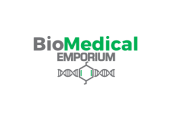
It works by reducing inflammation, inhibiting excess oil production, and decreasing the production of melanin. Azelaic acid can also improve skin texture and reduce the appearance of fine lines and wrinkles. It is generally well-tolerated by most skin types, including sensitive skin and may be used in pregnancy.

The Complexion Peel is a cocktail peel suitable for individuals with pigmentation.

Mommy to be's - You can now get a pregnancy peel safe for baby & mom, to
help prevent stretchmarks, prevents acne break outs, scaring & the dark
vertical line known as the Linea Nigra.
Our Biomedical light fruit acid peel is safe and specifically made to
treat
pregnant women. The peel has a sensational polishing, cleaning affect on
the
skin that should leave you feeling radiant.
If your skin is acne-prone, this is an essential option for you to help
minimize acne breakouts and prevents pigmentation what the hormones are
driving your skin to do.
All products used in our Preggy Facials are completely safe and soothing
to
your pregnant skin.

cosmelan is a professional depigmenting method that fully removes spots and prevents their reappearance for a short- and long-term outcome. It is indicated for the attenuation or eradication of pigmentation imperfections located on the face. It also enhances skin brightness and unifies the tone, helping to improve skin beauty. Downtime: One week
.png)
Depigmenting peeling with a complex formula that accelerates epidermis renewal for removal of the melanin built up on the surface. It provides a visible improvement in tone and luminosity. COMPOSITION: azelaic acid, tranexamic acid, resorcinol, phytic acid DOWNTIME: LITTLE TO NO DOWNTIME, Works well in combination with depigmenting microneedling.
.png)
Broad-spectrum peel for treating dark spots, uneven skin tone and aging. Composition: 14% salicylic acid + 14% lactic acid + 8% citric acid Use: - mild to moderate photoaging, expression lines and superficial wrinkles, loss of firmness, dilated pores, dull and opaque skin. - hyperpigmentations: solar lentigo, irregular tone. - suitable for skin susceptible to acne associated with menopause or of hormonal origin. Downtime: No down-time
.png)
Specific treatment for imperfections in the periorbital (around the eyes) area: wrinkles in the eyelids (upper and lower) and outer sides (crow’s feet), hyperpigmentations, flaccidity, loss of tissue density, under-eye circles, loss of brightness.
.png)
20% azelaic acid + 20% salicylic acid Peel with antifungal and comedolytic properties. Indicated especially for treating the different stages of acne.
.png)
Mandelic acid 30% peel that gently and gradually penetrates the skin. It stimulates collagen and proteoglycan synthesis, encouraging skin rejuvenation and allowing gentler, more gradual exfoliation. Indicated for oily and seborrheic skin and/or individuals with dyschromia.
.png)
The Meso Acne Treatment Peel aims to control inflammation and redness with vitamins and ingredients specially formulated to combat specific skin concerns. The treatment helps reduce the production of oil in the skin, thus reducing Acne. This is done by un-clogging the oily skin and removing the dead cells. It also stimulates new cells which reduces the dead skin cells, making your skin look much brighter and rejuvenated.
.png)
This product reduces pigmentation, improves congestion, breakout, acne concerns reduces scarring, stimulating collagen, elastin, glycosaminoglycan production, refines pores and improves texture, reduction in fine lines and wrinkles, unifies skin tone.
.png)
Lorem ipsum dolor sit amet consectetur adipisicing elit. Deleniti, animi? Eligendi repellat facilis, temporibus eum quibusdam tempore accusamus laborum quidem, quos numquam similique ex! Eum tempore ratione distinctio animi eligendi!
.png)
Last-generation face mask designed to enhance the cell renewal process, restructure the water-lipid layer and increase skin moisturising levels. It is made up of crystal fiber, a material for medical use based on 3D nano-fibers and which is 100% natural, safe and hygienic. It fits the lines of the face perfectly, with an occlusive effect that improves permeability and the carrying efficacy of the active ingredients.
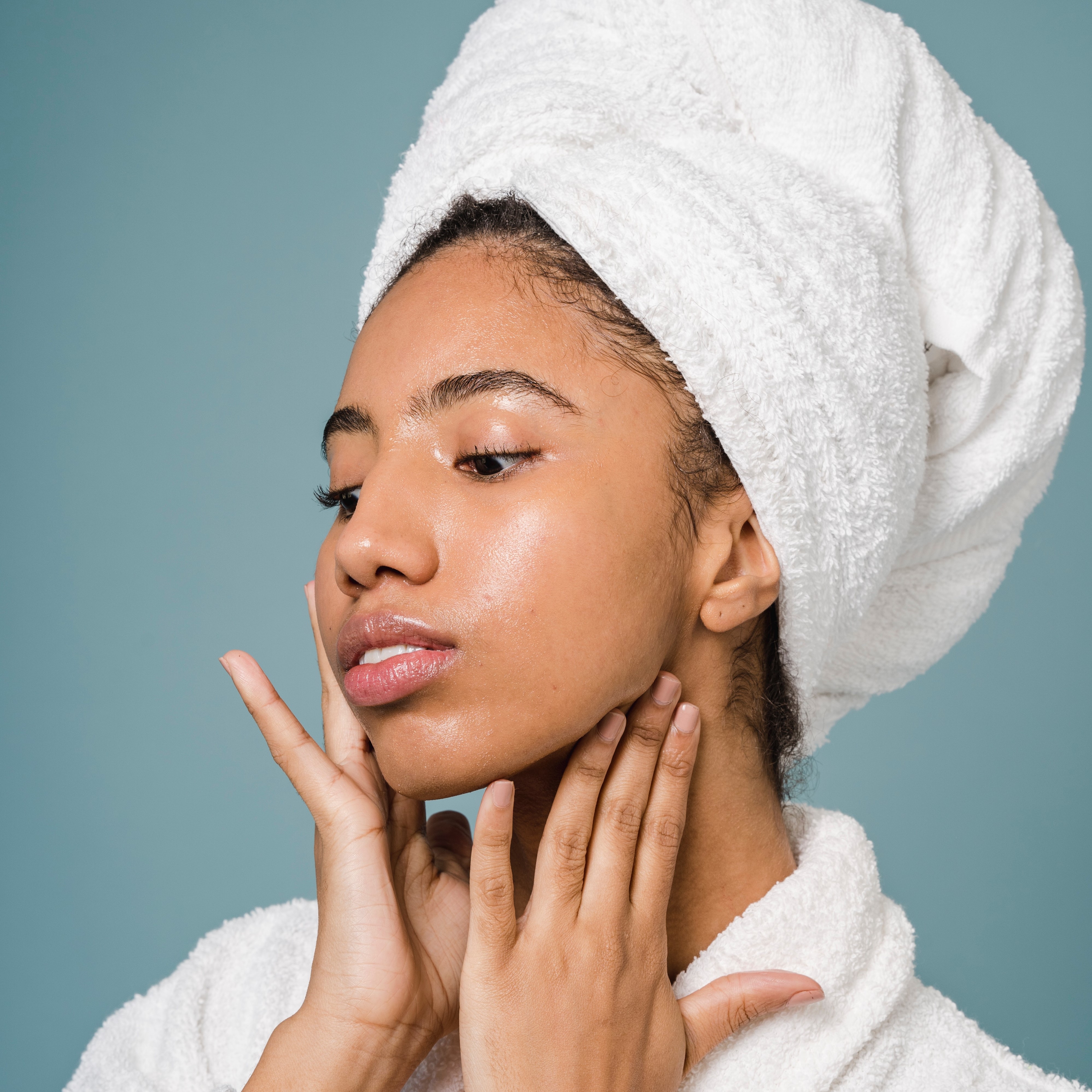
The GetGlowing MicroPeel is a mild peeling which will lightly exfoliate the skin leaving it refreshed, soft and more radiant.


It is composed of Salicylic acid, Kojik acid and Resorcinol. The benefits of the peel are a refined skin texture, smoother fine lines and evened out skin discoloration. It includes the reduction of the appearance of acne, acne scars and environmental damage to the skin as well as improved melasma and hyperpigmentation.
The Elaine Brennan Skin Renewal Peel is a more advanced chemical peeling system that uses a combination of chemical agents to treat a variety of skin concerns.


The benefits of this peel are the following: Evens skin tone, refines pores, Clears acne, improves post-acne scarring & normalizes skin oiliness, Improves wrinkles & skin dryness, fine lines, and the appearance of skin ageing, Brightens dull skin, evens tone and texture, Treats hyperpigmentation and melasma, Stimulates collagen and elastin for firmer skin.


PRP or Platelet Rich Plasma is a medical procedure that involves drawing your blood and processing it to separate the platelets from the red blood cells which is then injected back into your body to help accelerate healing and tissue regeneration.
The P SHOT is an all-natural, painless and non-surgical
procedure that can rejuvenate
and revitalise penile function provide firmer and stronger erections,
give
you dramatically
improved sensitivity and significantly enhance your sex drive.
This is when the PRP is injected into the penis.
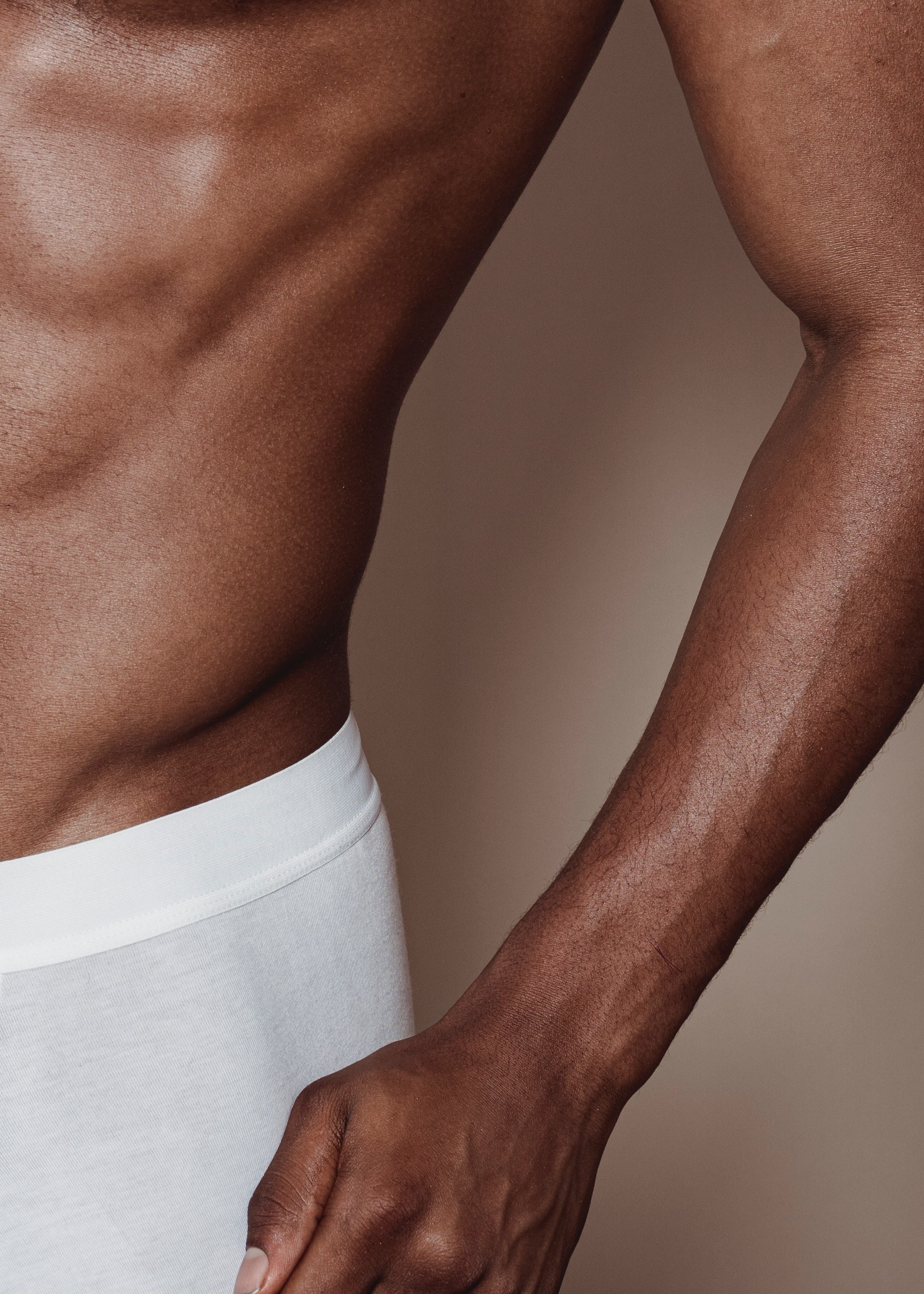
The V SHOT is an all-natural, painless and non-surgical
procedure that can rejuvenate
and revitalise vaginal and clitoral function, alleviate bladder leakage,
and
give you dramatically
improved sensitivity and significantly enhance your sex drive.
This is when the PRP is injected near the clitoris and the vaginal wall.
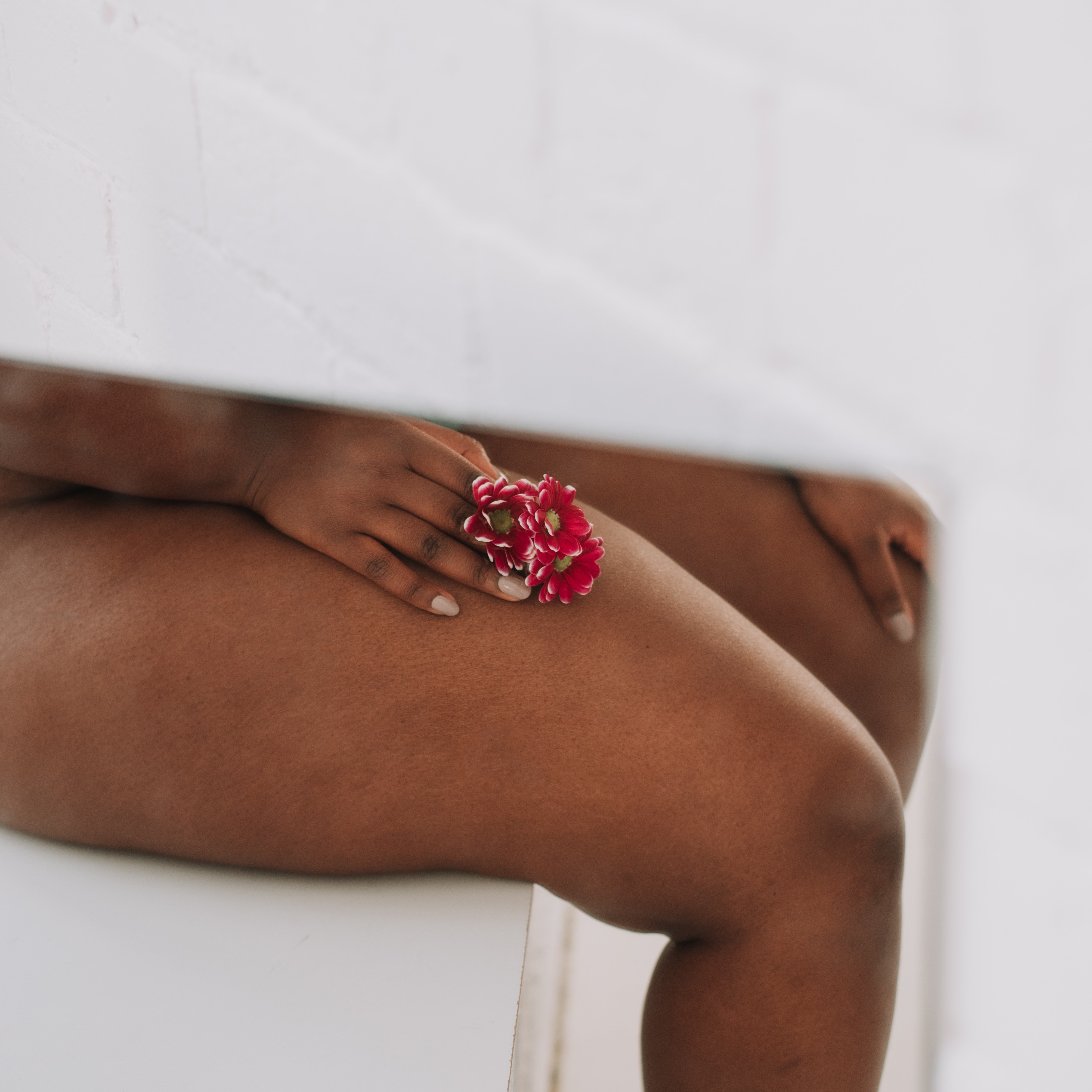
A Skin Rejuvenation or Vampire Facial is a non-surgical cosmetic treatment that involves using your own blood to rejuvenate your skin. This PRP is then applied to your face, either through microneedling or injection, to stimulate collagen production and improve skin texture and tone.
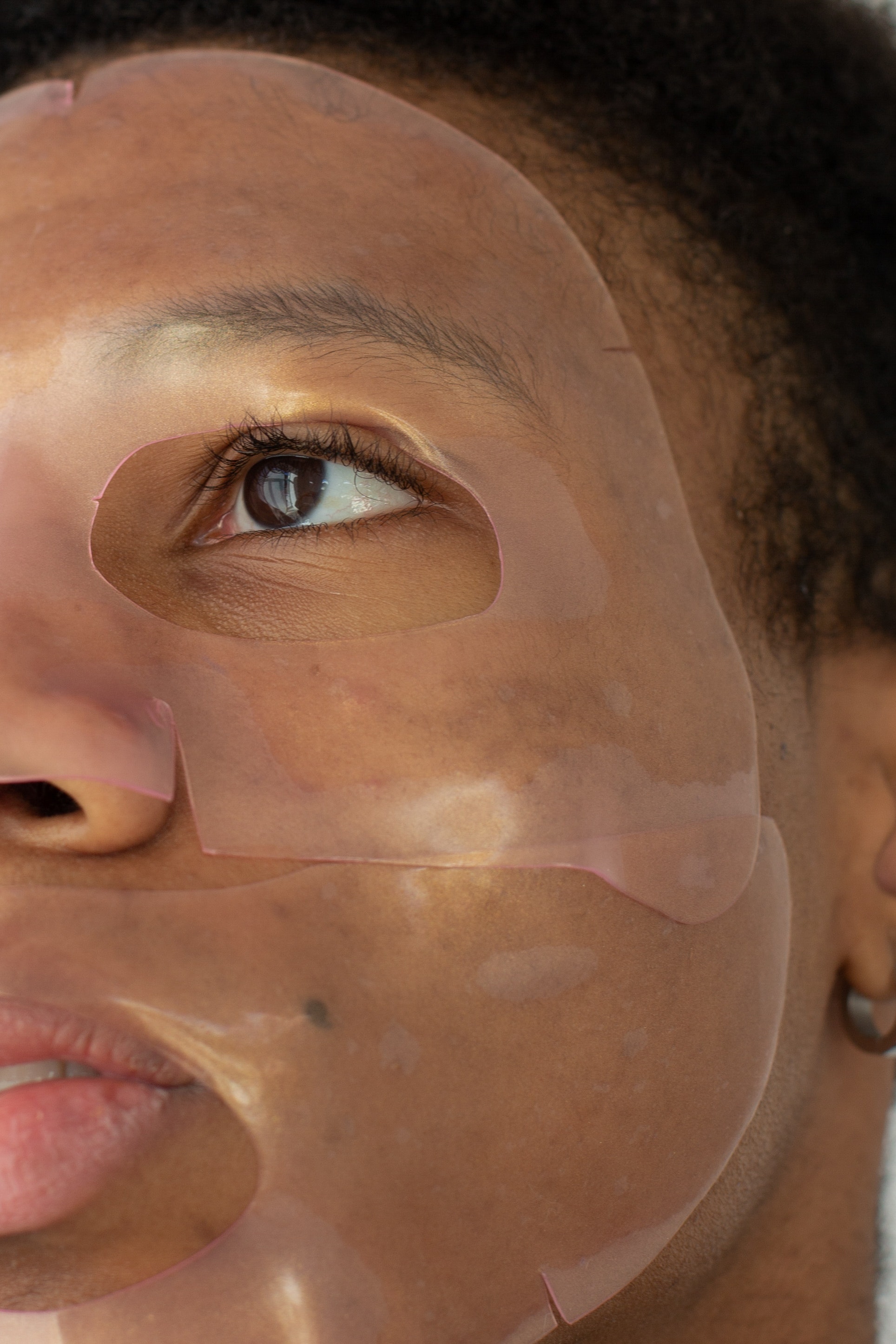
Microneedling is a minimally invasive cosmetic procedure that involves using a needle-based device to create controlled micro-wounds on the skin's surface. This procedure results in improved skin texture, firmness, and elasticity. It can also help with hair growth, pigmentation, scarring, enlarged pores, and product penetration.
Our advanced micro needling that uses a minimum of active ingredients including retinol. For individuals concerned about acne scars, fine lines and wrinkles and stubborn pigmentation.

This treatment is for individuals who struggle with hair loss (Alopecia) and hair thinning due to static hair follicles and inflammation on the scalp. Mild scalp micro needling is performed on the scalp with biological ingredients to stimulate the follicle hair growth again.

Use of in-clinic microneedling and home care to increase collagen and elastin production, leading to improved skin texture and a reduction in the appearance of stretch marks.
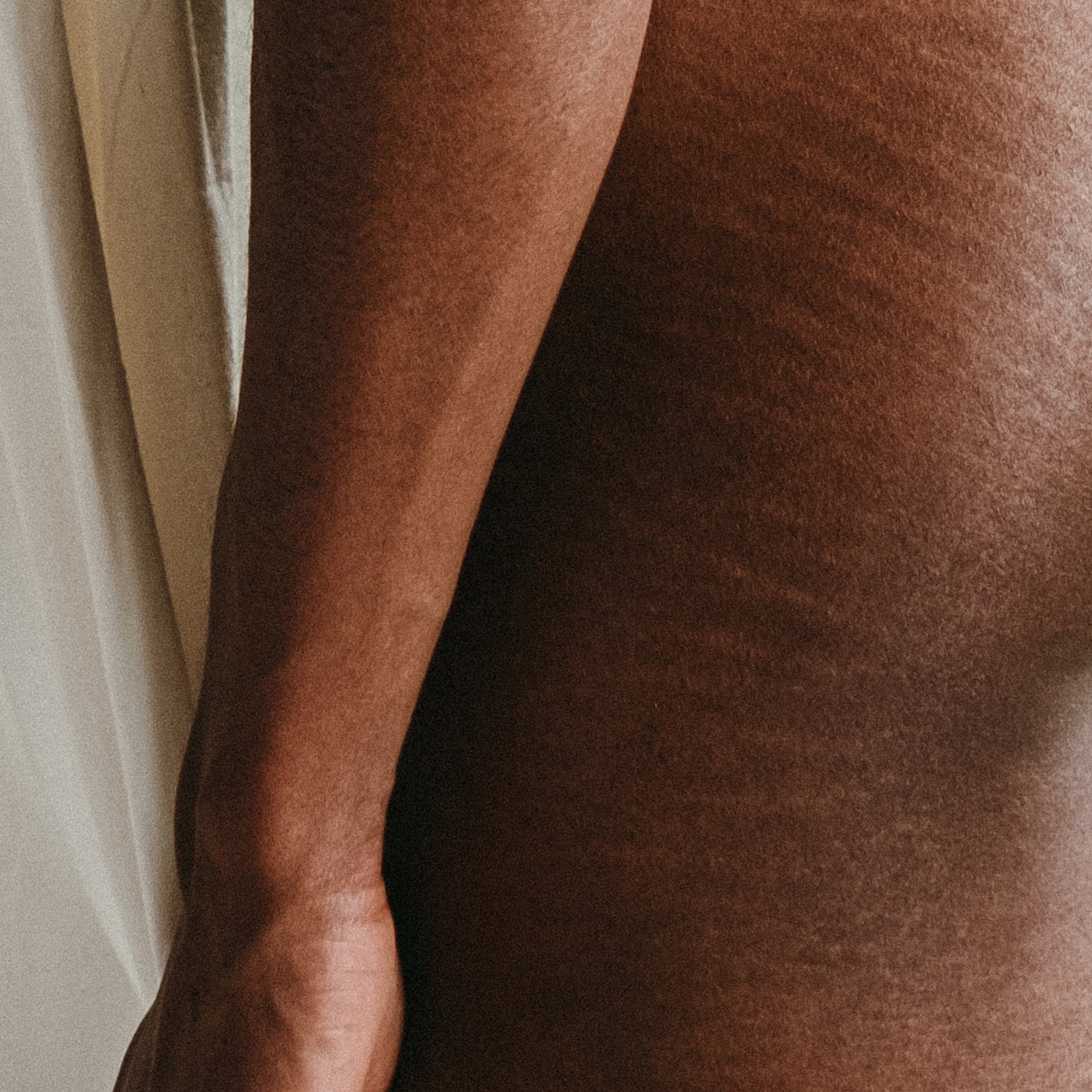
Exclusive combination of tranexamic acid, vitamin C, N-acetyl glucosamine and idebenone with a brightening and antioxidant effect. Smooths out skin tones.
.png)
This treatment provides an antioxidant and brightening action, based on a blend of 20% ascorbic acid (vitamin c), mineral salts (sodium carbonate hydrogen, sodium sulphite, sodium edetate) and a non-cross linked hyaluronic acid. It is indicated to use as antioxidant and UVA/ UVB photo-protection, and as a treatment for dull and papery skin, melisma, lack of firmness, and hair loss.
.png)
Lorem ipsum dolor sit amet consectetur adipisicing elit. Deleniti, animi? Eligendi repellat facilis, temporibus eum quibusdam tempore accusamus laborum quidem, quos numquam similique ex! Eum tempore ratione distinctio animi eligendi!
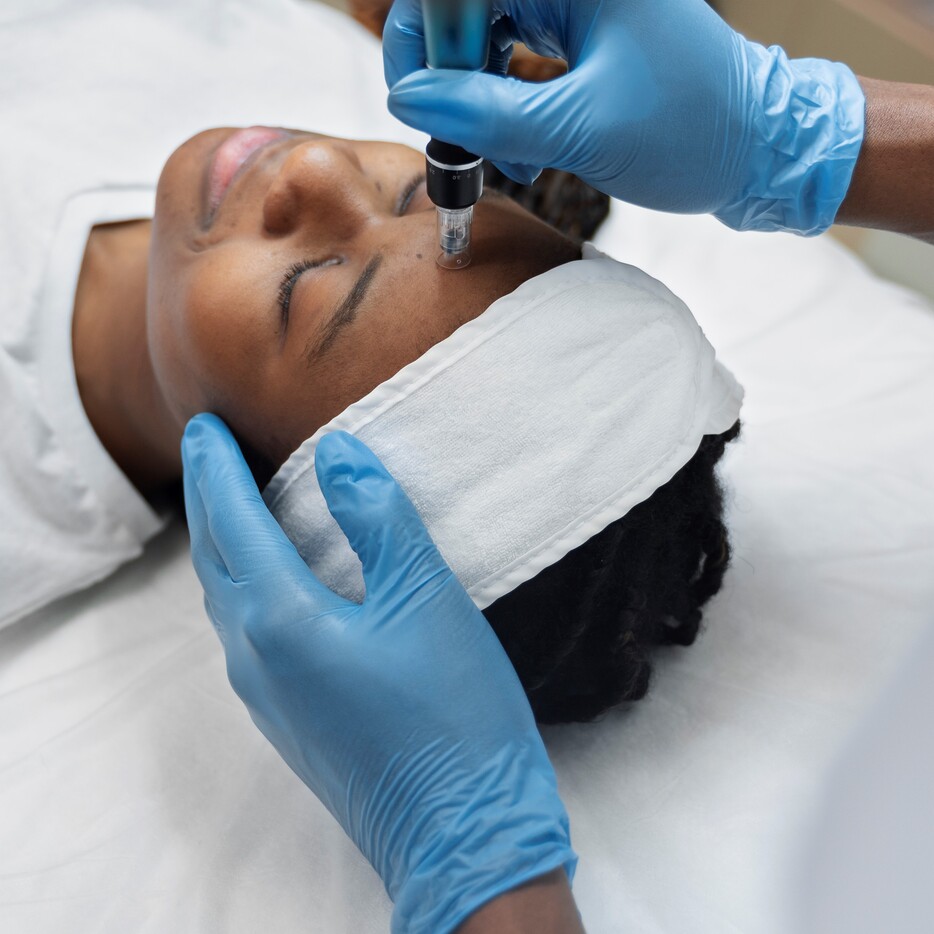
Lorem ipsum dolor sit amet consectetur adipisicing elit. Deleniti, animi? Eligendi repellat facilis, temporibus eum quibusdam tempore accusamus laborum quidem, quos numquam similique ex! Eum tempore ratione distinctio animi eligendi!

Lorem ipsum dolor sit amet consectetur adipisicing elit. Deleniti, animi? Eligendi repellat facilis, temporibus eum quibusdam tempore accusamus laborum quidem, quos numquam similique ex! Eum tempore ratione distinctio animi eligendi!
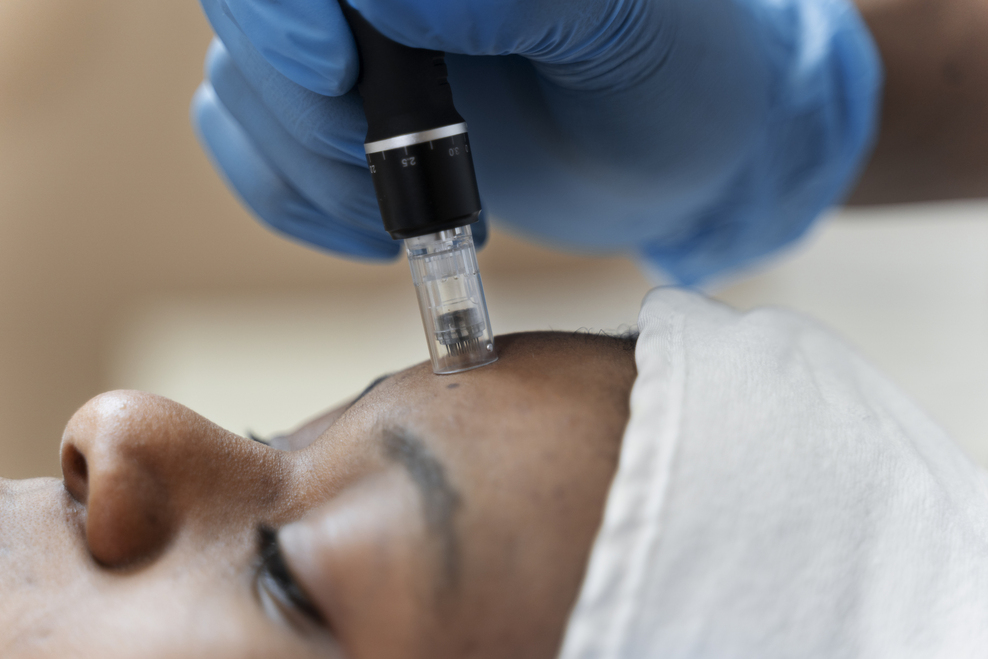


Lamelle professional facials are high-quality products designed to improve the health and appearance of the skin. These facials address specific skin concerns, such as acne, hyperpigmentation, and signs of aging. They typically involve a deep cleanse, exfoliation, and the application of various serums and masks to nourish and hydrate the skin. Lamelle professional facials are tailored to each individual's unique skin type and concerns, so they can provide targeted results. The treatment is non-invasive, requires no downtime and can leave the skin feeling refreshed, rejuvenated, and glowing.
This facial helps to revitalise and refresh the skin. The Age-prevent mask contains anti-oxidants to protect the skin against free radicals and also helps to bind water in the skin.
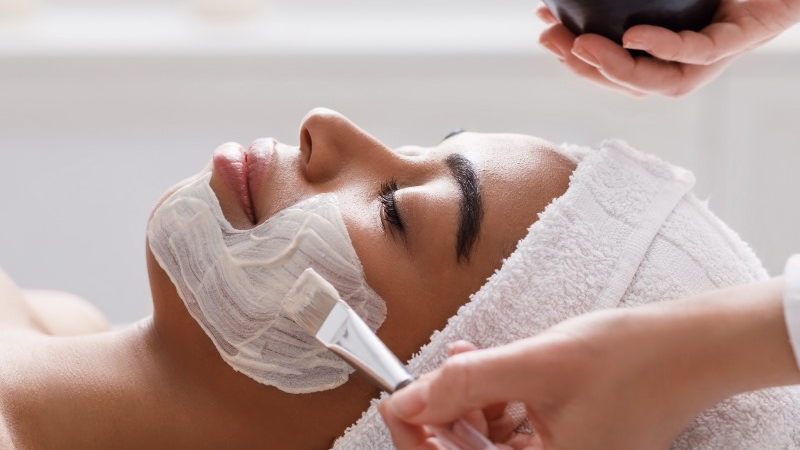
This is a deep-cleanse facial that helps to improve acne-prone skin. The Purifying mask helps to soothe, heal and calm problematic skin.

This hydrating facial helps to soothe, calm and moisturise skin. The Hydration mask helps to bind water in the skin to improve the hydration of your skin. This facial is great to use during the dry winter months

This is a facial treatment that combines a mild (30%) lacti-firm chemical peel and a lamelle essencial facial. It takes zero downtime, there's no peeling and it leaves you with an instant glow.

This is a body-shaping procedure that targets localised areas of fat, which are not amenable to exercise and diet. It is a fat dissolving injection treatment.
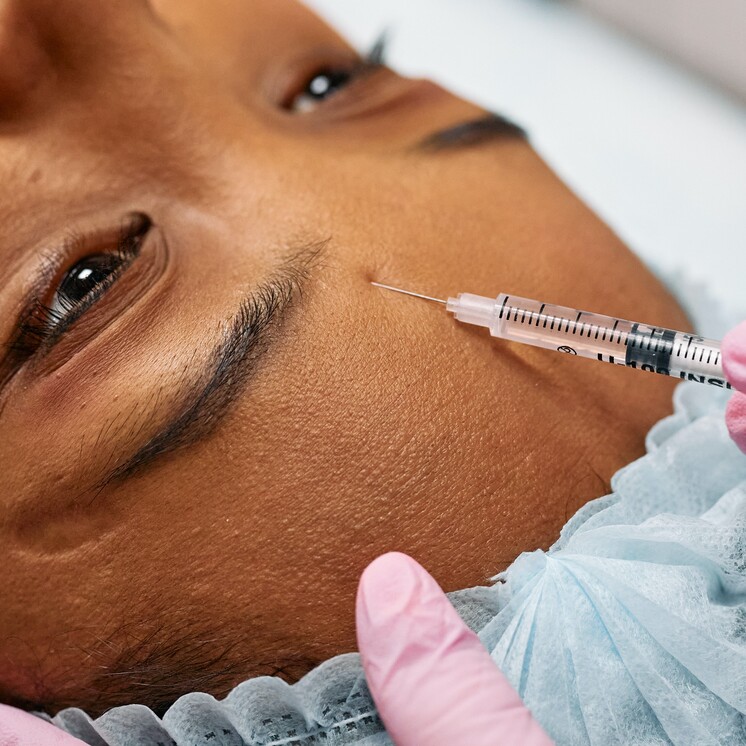

The one common ingredient in all injection lipolysis formulations is phosphatidylcholine (PPC).
Lipolysis injections are administered by a licensed healthcare provider using a fine needle. The number of injections and the amount of solution used will depend on the area being treated and the individual's goals.
Dermal fillers are a popular cosmetic treatment that involves injecting a gel-like substance under the skin to add volume, smooth out wrinkles, and enhance facial features. This common cosmetic procedure typically produces results right away, and can last months or years.
We currently have two volumes of Dermal Fillers, 0.5ml and 1ml.


Dermal fillers are made of various materials, such as hyaluronic acid, calcium hydroxylapatite, and poly-L-lactic acid. Hyaluronic acid is the most commonly used material for dermal fillers and is a natural substance found in the body.
During the procedure, the dermal fillers are injected directly into the skin using a fine needle or cannula. The procedure is usually quick and relatively painless, and there is no downtime required.
Thread lifting is a procedure that uses dissolvable threads to lift and tighten sagging skin primarily on the face and neck. It can reduce the appearance of wrinkles, lines, and loose skin, with results lasting up to two years.


Dermal Threads can be made of materials such as polydioxanone (PDO), polylactic acid (PLA), or poly-L-lactic acid (PLLA).
Dermal threads are thin and biodegradable threads that are inserted into the skin. They help to lift the sagging skin over time.
Dermal fillers are a popular cosmetic treatment that involves injecting a gel-like substance under the skin to add volume, smooth out wrinkles, and enhance facial features. This common cosmetic procedure typically produces results right away, and can last months or years.
We currently have two volumes of Dermal Fillers, 0.5ml and 1ml.


Dermal fillers are made of various materials, such as hyaluronic acid, calcium hydroxylapatite, and poly-L-lactic acid. Hyaluronic acid is the most commonly used material for dermal fillers and is a natural substance found in the body.
During the procedure, the dermal fillers are injected directly into the skin using a fine needle or cannula. The procedure is usually quick and relatively painless, and there is no downtime required.
Dermal threads are thin, biodegradable threads that are inserted under the skin to lift and tighten sagging skin. They can be made of materials such as polydioxanone (PDO), polylactic acid (PLA), or poly-L-lactic acid (PLLA).

The PRofhilo Injection is a treatment thatis often used to improve the appearance of fine lines, wrinkles, and sagging skin.


Profhilo is injected into the skin in a series of small injections. Once mand, the hyaluronic acid spreads out beneath the skin, stimulating the production of collagen and elastin fibers. This helps to improve skin elasticity, hydration, and overall quality.
Mesohyal Melilot is an anti-cellulite treatment based on mix of 0,3% melilot extract, mineral salts, troxerutin and a non-crosslinked hyaluronic acid. It is indicated as a treatment for oedematous cellulite and fluid retention. Extract of Melilot increases lymph draining, reduces oedema and capillary permeability, and activates return venous flow.
.png)
This is an injection noted primarily for the ability to reduce the appearance of facial wrinkles. Long-term treatment can prevent the development of imprinted facial lines that are visible at rest.


Botox is made from a toxin produced by the bacterium Clostridium botulinum.
It is commonly used to treat facial wrinkles and fine lines and can also be used to treat other conditions, such as migraines, excessive sweating, and muscle spasms.

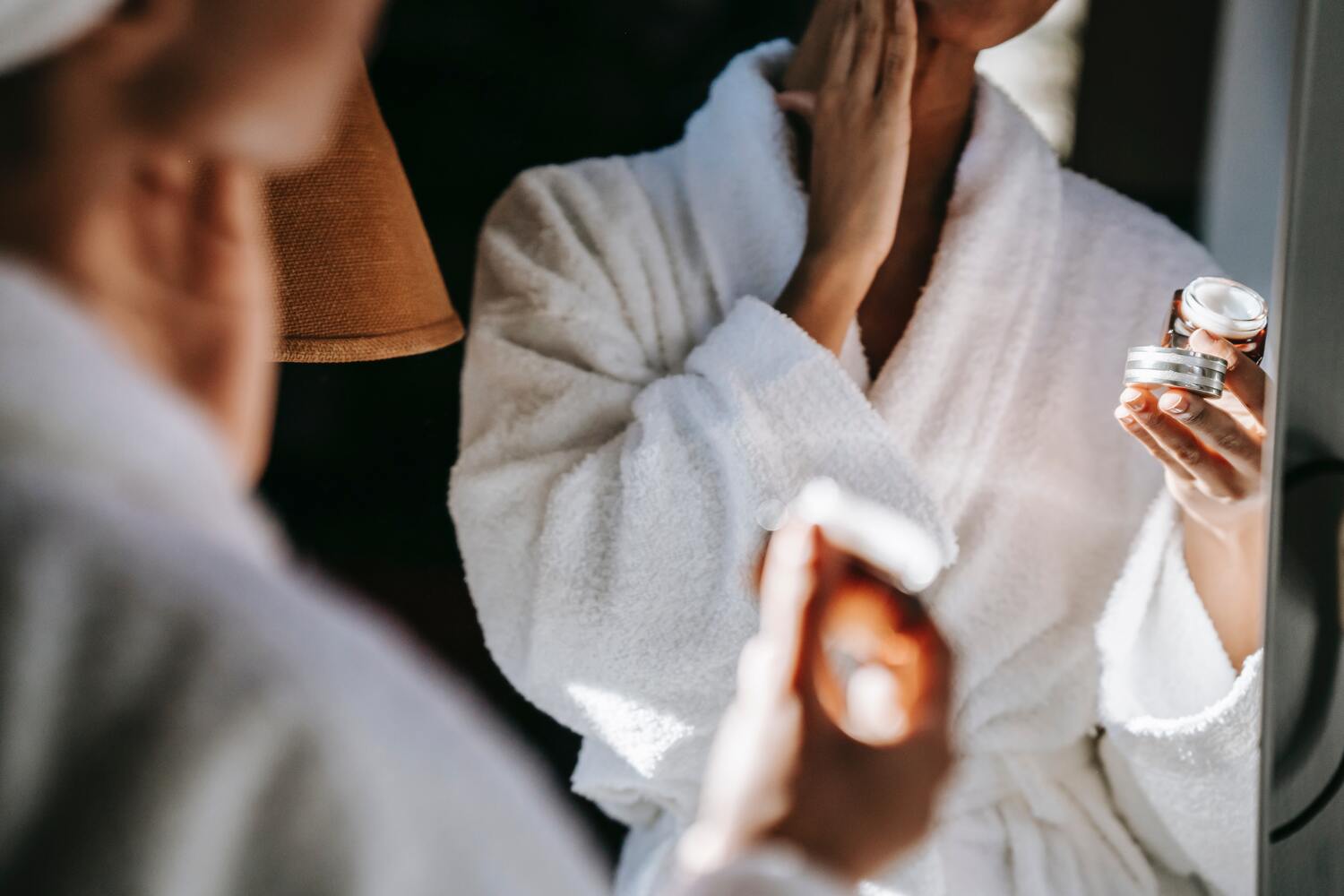
LED (light-emitting diode) skin therapy is a non-invasive treatment that uses light-emitting diodes to painlessly stimulate the skin's natural healing process. Different wavelengths of light are used to target various skin concerns, such as acne, hyperpigmentation, and fine lines and improve the skin's appearance.
.jpg)

This is a type of light therapy where specific light enters the skin's layers to improve the skin.
This procedure takes place ina relaxed environment for a set amount of time to allow the light to effeciently penetrate the skin.
Warts, skin tags, and moles removal can be removed depending on the
size,
location, and type of growth.
We provide advice and consultation to
determine
the
most
appropriate and safest removal option. It is essential to follow proper
aftercare to
ensure
proper healing and prevent infection.
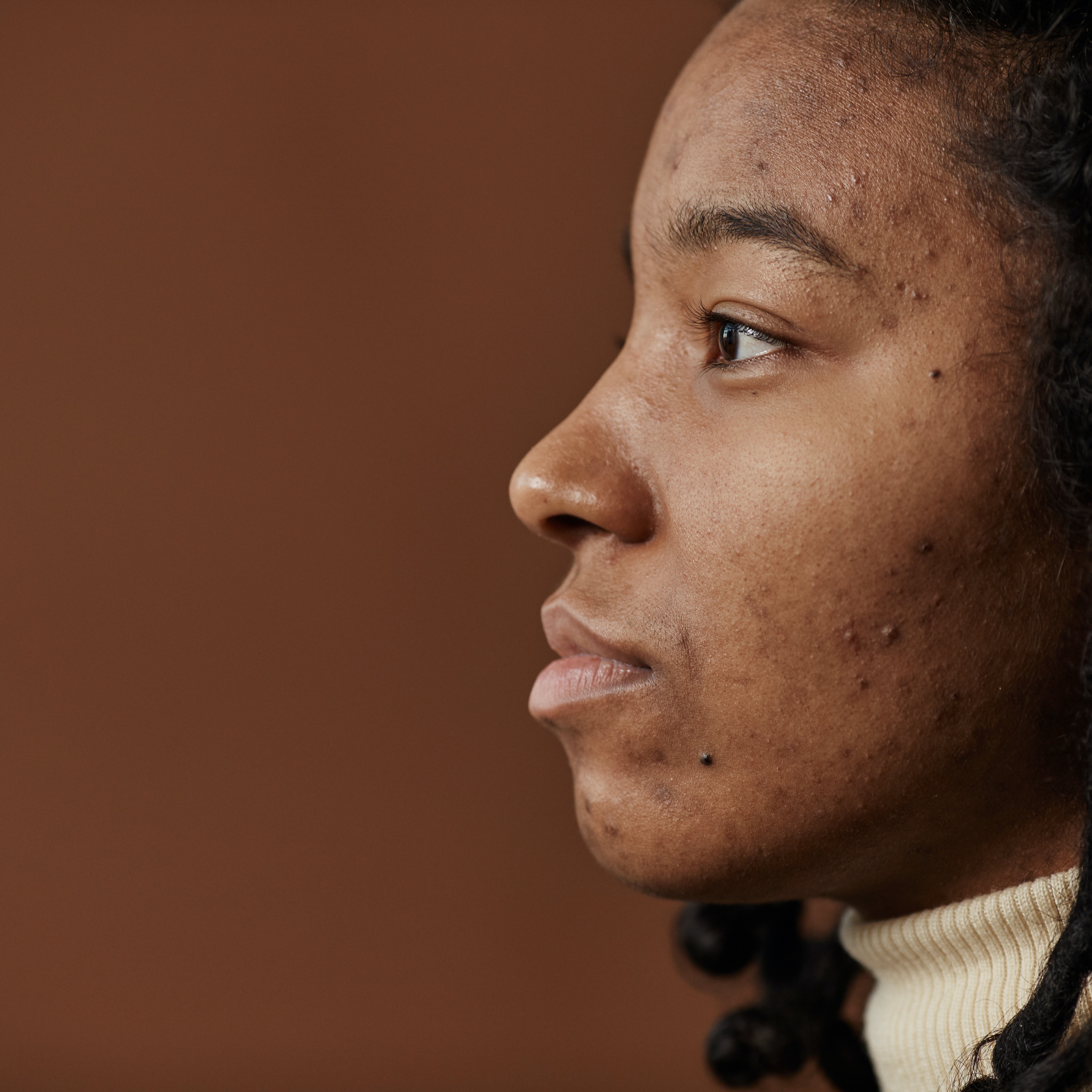
Healing Earth is a premium African spa brand that offers natural, organic products, therapies and spa concepts to discerning clients the world over. Each lovingly created Healing Earth product harnesses the restorative powers of Africa’s rich natural resources, and is made from only the purest natural active ingredients sourced from the continent’s powerful minerals, oceans, flowers, herbs, fruit, seeds and natural oils.
Deep Tissue Massage is perfect for anyone dealing with chronic muscle pain or tension. By applying firm pressure to the deeper layers of muscles and connective tissue, this therapeutic technique helps to reduce inflammation, improve circulation, and release tight knots and adhesions.
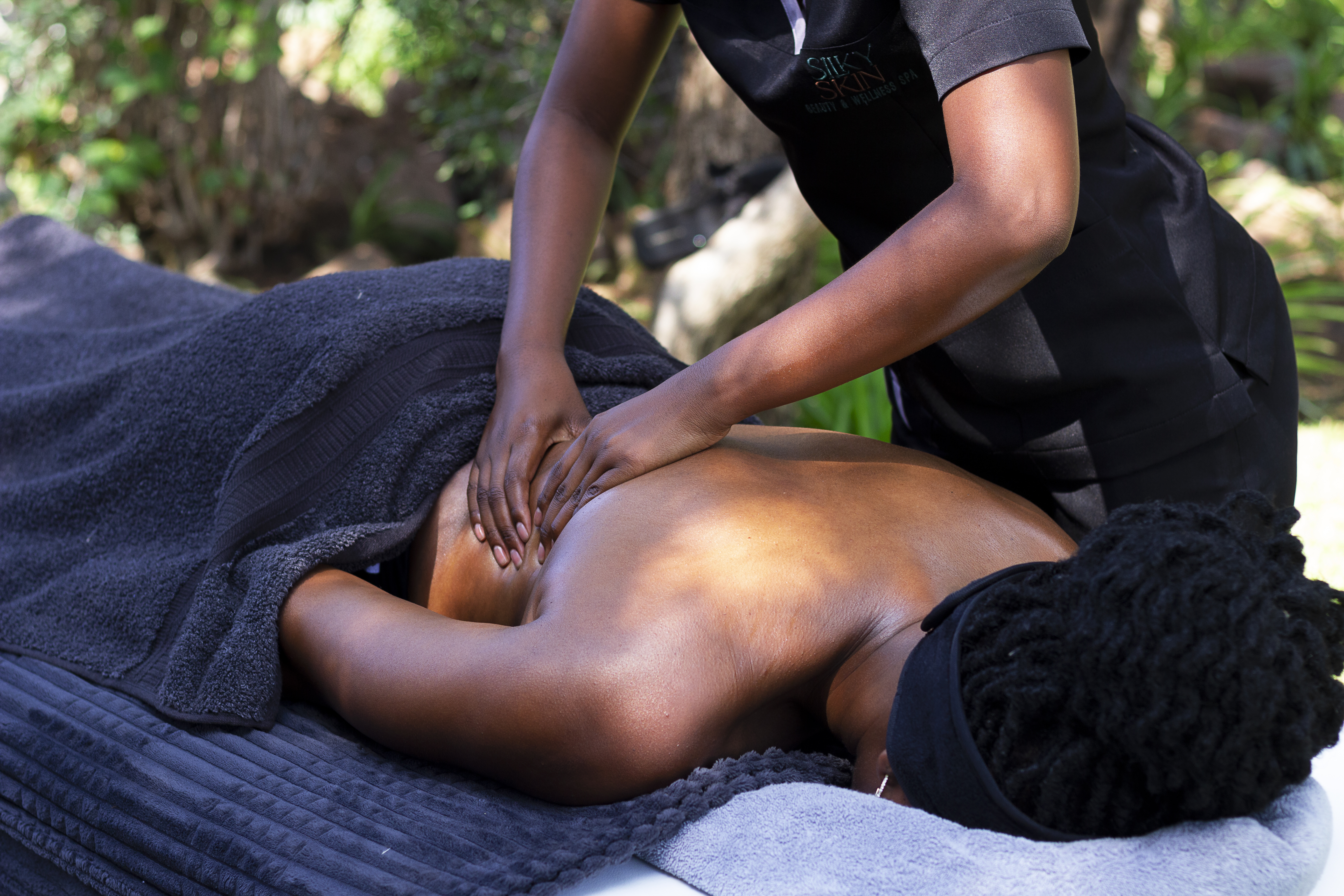
A popular form of relaxation massage that will leave you feeling refreshed and rejuvenated. With long, flowing strokes, kneading, and circular movements, this technique targets the topmost layers of muscles to promote overall relaxation, reduce muscle tension, and improve circulation.
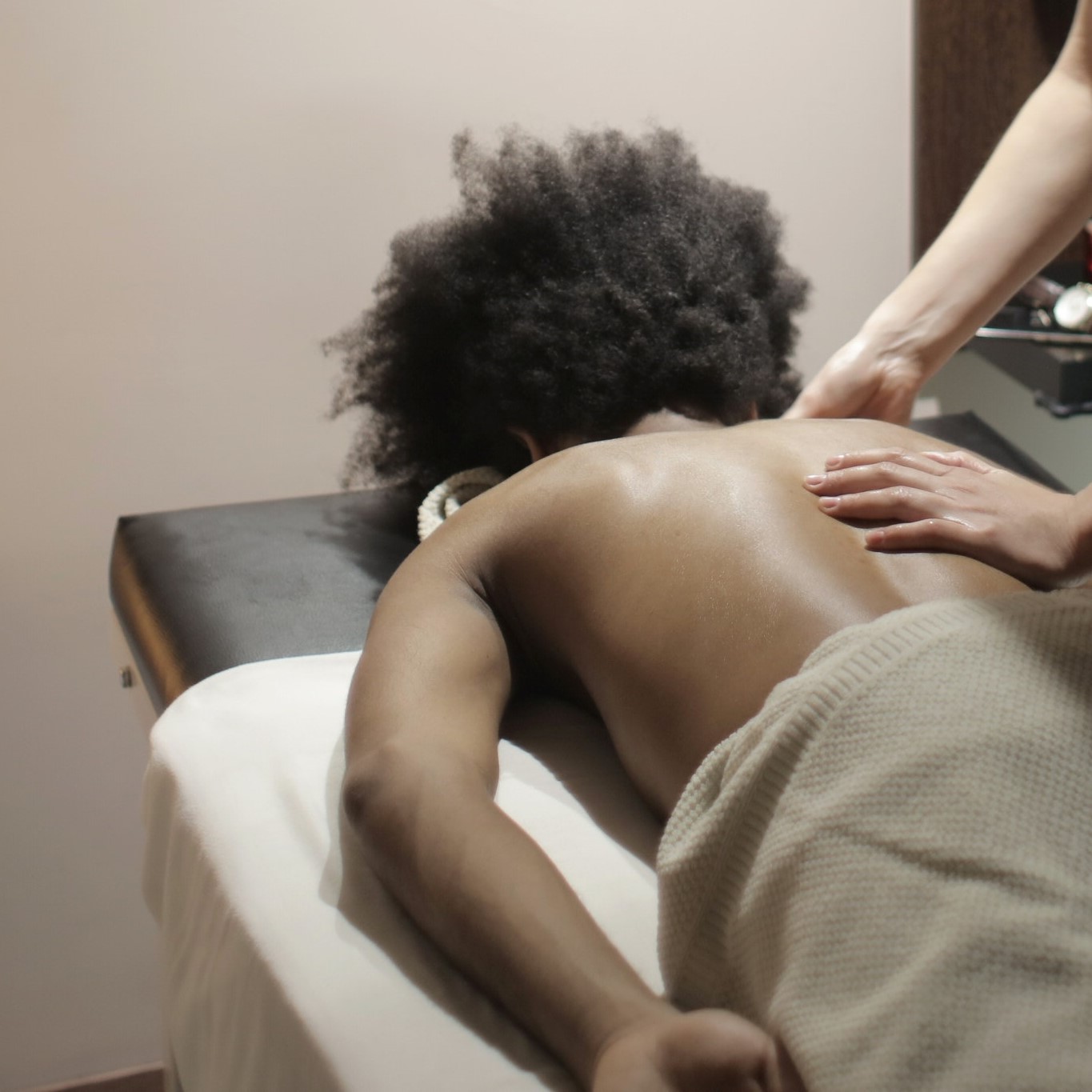
For the ultimate in relaxation and muscle relief, try a Hot Stone Massage. By using smooth, heated stones to massage the muscles, this technique helps to soothe sore muscles and promote deep relaxation. Perfect for anyone with muscle pain or tension.
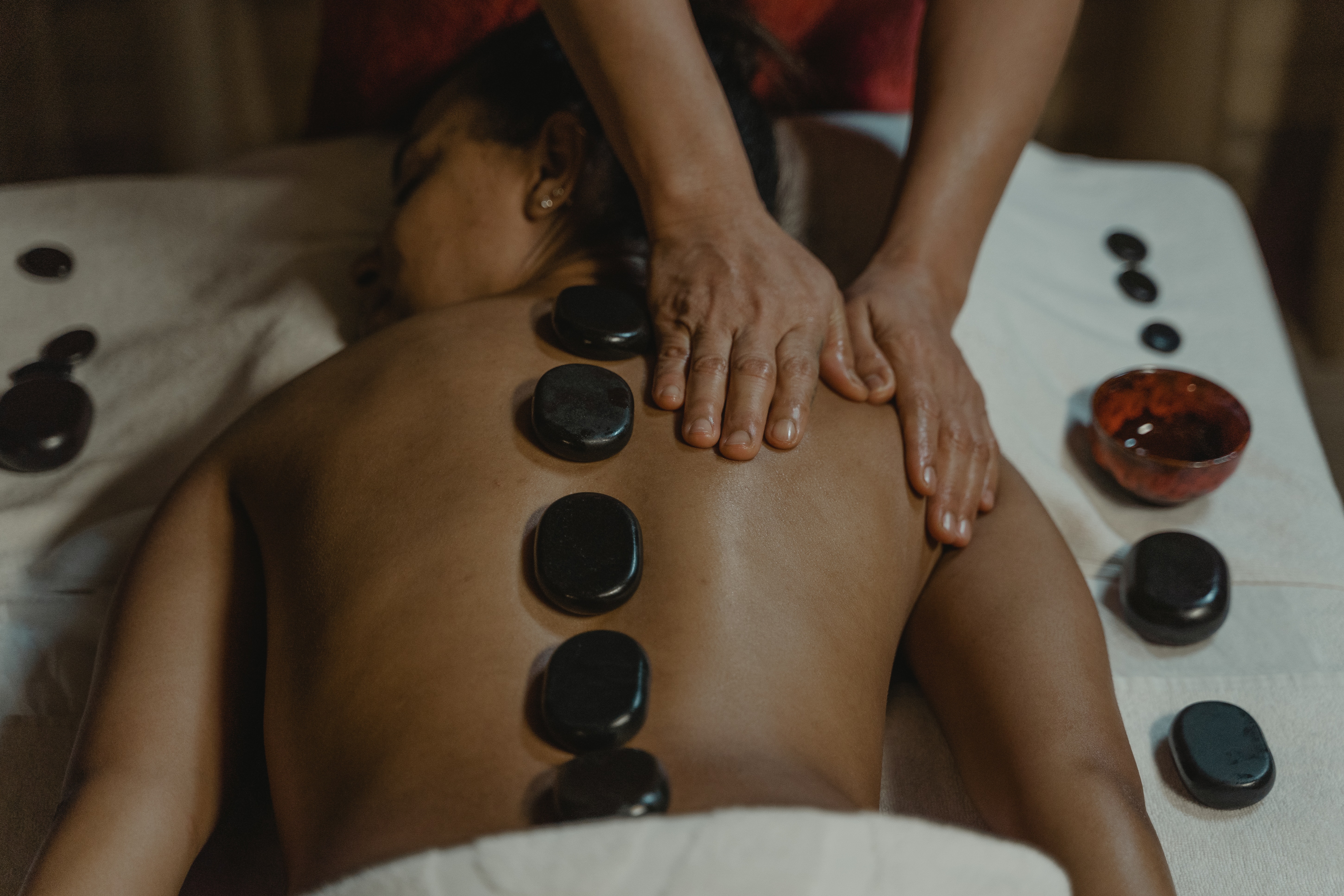
For headaches, neck tension, stiff shoulders, and stubborn stress, allow this pressurepoint and tension release massage to magically melt away all your worries. Choose from oil or no oil massage.

Healing Earth is an advanced skin and body care range which is based on essential oils. Each facial starts off with a foot ritual.
Unique natural serums are used to encourage healing, decongestion and clear skin.This deep cleansing facial helps to regulate oil secretion whilst refining the pores.
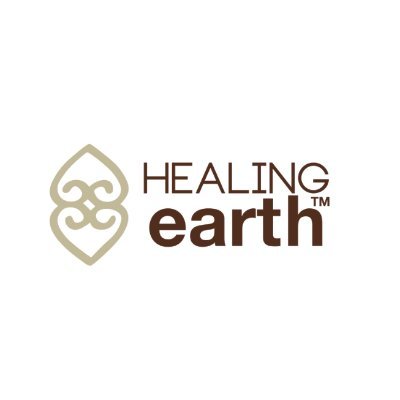
This high in anti-oxidant treatment helps minimize the appearance of fine lines and wrinkles while feeding the skin with the hydration it needs.

A facial treatment using the Tri-Enzyme facial range. These products are designed to replenish and repair the skin, penetrating deeper into the epidermis.

This Facial uses a high-dosage of anti-ageing components including vitamin C, vitamin E, cranberry and traditional wisdom of African healing (Kigelia Africana, papaya enzyme), to penetrate deeper into the levels of the epidermis, allowing reconditioning of the skin.

A treatment that is designed to renew even the most lifeless skin, with the use of Jasmine and Baobab, these active ingredients will improve your skin texture, colour and circulation.

An unmatched and effective treatment developed to restore, purify and revitalize the skin with the use of active ingredients such as Neroli and Rose.

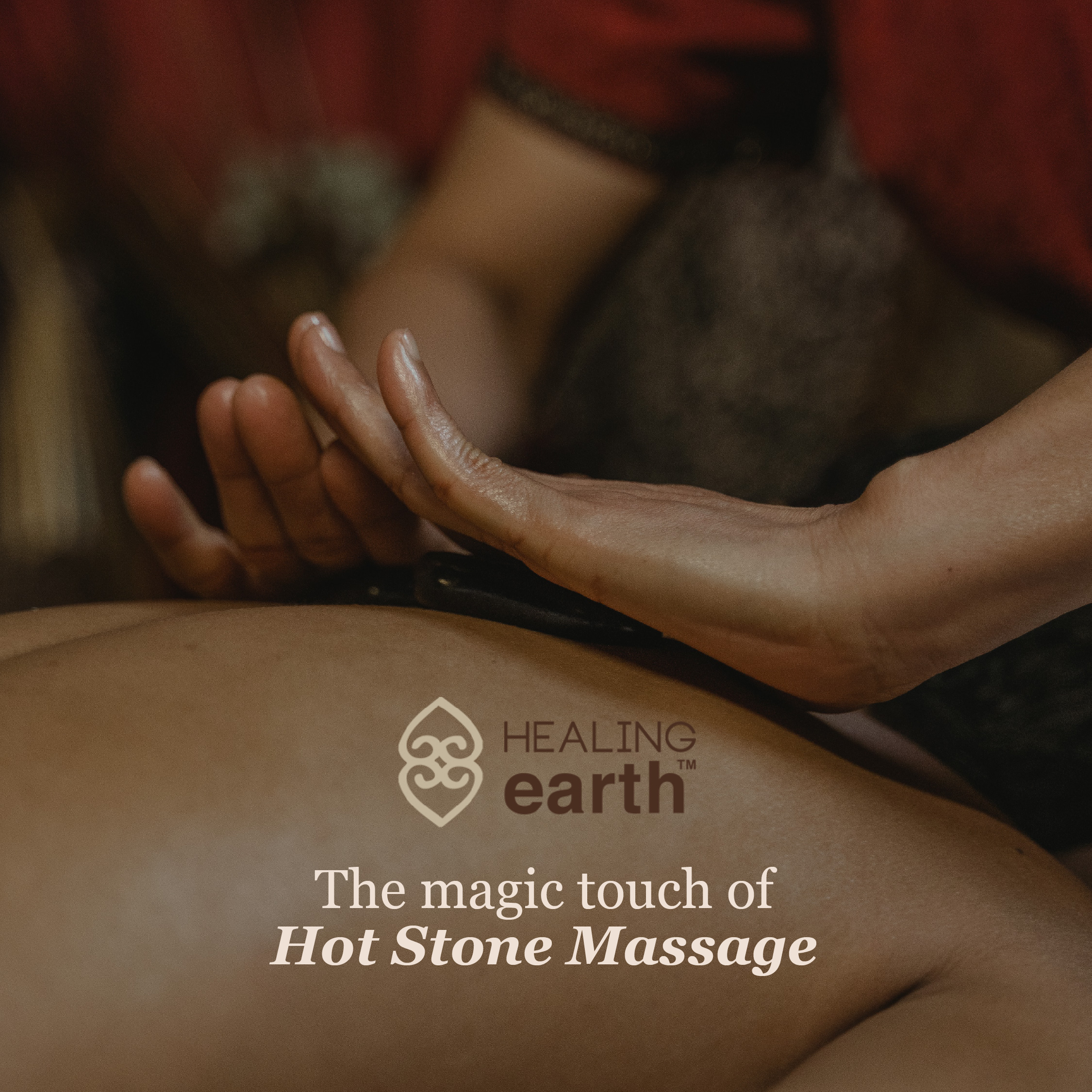
A chemical peel is a non-surgical cosmetic treatment that involves the application of a chemical solution to the skin to remove the outermost layer of dead skin cells. This process can improve the appearance of fine lines, wrinkles, acne scars, and hyperpigmentation, as well as stimulate the production of collagen and elastin to improve skin texture and tone.
There are three main types of chemical peels: superficial, medium, and deep. Superficial peels are the mildest and are designed to remove only the outermost layer of dead skin cells. Medium peels penetrate deeper into the skin to remove more damaged skin cells, while deep peels are the strongest and can remove several layers of skin to improve more severe skin conditions.
1. Glycolic Acid: Glycolic acid is an alpha-hydroxy acid (AHA) derived from sugar cane. It
is a
small molecule that can penetrate the skin deeply and stimulate collagen production, improve skin
texture, and reduce the appearance of fine lines and wrinkles. Glycolic acid peels are particularly
effective for treating mild skin imperfections such as acne and uneven skin tone.
2. Salicylic Acid: Salicylic acid is a beta-hydroxy acid (BHA) derived from willow bark. It
is
oil-soluble and can penetrate deep into the pores to unclog them and treat acne, blackheads, and
whiteheads. Salicylic acid peels are also effective at reducing inflammation and improving skin
texture.
3. Lactic Acid: Lactic acid is an alpha-hydroxy acid (AHA) derived from milk. It is a
milder
acid than glycolic acid and is particularly effective at treating hyperpigmentation, fine lines, and
dry
skin. Lactic acid peels are a good option for individuals with sensitive skin.
4. Kojic Acid: Kojic acid is derived from mushrooms and is a natural skin-lightening agent.
It
is effective at treating hyperpigmentation, including melasma, and can also help to reduce the
appearance of fine lines and wrinkles.
5. Azelaic Acid: Azelaic acid is a naturally occurring acid found in wheat, barley, and
rye.
It has antibacterial properties and is effective at treating acne and rosacea. Azelaic acid peels
can
also help to reduce the appearance of hyperpigmentation and improve skin texture.
6. Resorcinol: Resorcinol is a chemical compound that is used in chemical peels to treat
acne,
hyperpigmentation, and fine lines. It works by exfoliating the skin and stimulating collagen
production.
7. Mandelic Acid: Mandelic acid is an alpha-hydroxy acid (AHA) derived from bitter almonds.
It
is a milder acid than glycolic acid and is effective at treating acne, hyperpigmentation, and fine
lines. Mandelic acid peels are also gentle enough to be used on sensitive skin.
8. Trichloroacetic Acid (TCA): TCA is a medium-strength acid that can penetrate deeper
into
the skin than glycolic acid or salicylic acid. It is effective at treating moderate to severe skin
imperfections, including deep wrinkles, acne scars, and sun damage.
Good candidates for chemical peels are typically individuals with mild to moderate skin imperfections, such as fine lines, wrinkles, sun damage, acne scars, or hyperpigmentation. It is also important for individuals to have realistic expectations about the results of the treatment and be willing to follow the aftercare instructions provided by their provider.
To prepare for a chemical peel, here are some general guidelines to follow:
1. Consult with Your Provider: It is important to consult with your provider before the
treatment to discuss your skin type, concerns, and medical history and to recommend the right
chemical
peel for you.
2. Stop Using Certain Skincare Products: It is important to avoid using retinoids,
glycolic
acid, and other exfoliating products for at least a week before the treatment, as they can increase
skin
sensitivity and irritation.
3. Avoid Waxing or Hair Removal Treatments: It is recommended to avoid waxing or other hair
removal treatments for at least a week before the treatment, as they can increase skin sensitivity
and
irritation.
4. Notify Your Provider of Any Medical Conditions or Medications: If you have any medical
conditions or are taking any medications, it is important to notify your provider before the
treatment
to ensure the safety and effectiveness of the treatment.
During a chemical peel treatment, the provider will first clean and prep the skin. Then, the chemical solution will be applied to the skin, which may cause a slight stinging or burning sensation. After a few minutes, the solution will be neutralized and removed from the skin.
The recovery process will depend on the type and strength of the chemical peel. Superficial peels typically have little to no downtime, while medium and deep peels may require several days of recovery time. After a chemical peel, it is important to avoid sun exposure and use a gentle skincare regimen.
After a chemical peel treatment, your provider will give you specific aftercare instructions to
follow.
Here are some general guidelines for chemical peel aftercare:
Avoid Direct Sun Exposure: Direct sunlight can damage the skin and increase the risk of
complications after a chemical peel treatment. It is important to avoid sun exposure and use a
broad-spectrum sunscreen with an SPF of 30 or higher when going outside.
Avoid exposure to heat: Avoid exposure to excessive heat, such as saunas or steam rooms, and direct
sunlight for at least 24-48 hours after the procedure.
Use Gentle Skincare Products: Your skin may be more sensitive than usual after a chemical
peel
treatment, so it is important to avoid using harsh or abrasive skincare products that can irritate
the
skin. Use gentle, fragrance-free products and avoid exfoliating for at least a week after the
treatment.
Avoid Activities that can Cause Sweating: Sweating can irritate the skin and increase the
risk
of infection after a chemical peel treatment. Avoid activities that can cause sweating, such as
exercising, for at least 24-48 hours after the treatment.
Keep the Skin Hydrated: Drink plenty of water and use a moisturizer to keep the skin
hydrated
and help with the healing process.
Avoid Touching the Treated Area: It is important to avoid touching or picking at the
treated
area to avoid introducing bacteria or causing irritation.
Avoid Makeup: Avoid applying makeup for at least 24 hours after the treatment to allow the
skin
to heal properly.
Be Patient: It may take several days or even a week for the skin to fully heal after a
chemical
peel treatment. Be patient and follow the aftercare instructions provided by your provider.
Follow Up Treatments are recommended for you based on your skin type and concerns.
The number of chemical peel sessions required for treatment
will
depend on the
individual's skin concerns
and treatment goals. In general, most individuals require a series of 3-6 treatments spaced 4-6
weeks
apart to achieve optimal results.
For mild skin imperfections, such as fine lines and minor discoloration, 3-4 treatments may be
sufficient. For more severe skin imperfections, such as deep wrinkles and significant discoloration
or
scarring, 4-6 treatments may be necessary.
It is important to note that individual results may vary, and some individuals may require more or
fewer
treatments depending on their skin type and concerns. Your provider will be able to assess your skin
and
recommend the appropriate number of treatments to achieve your desired results.
After completing a series of treatments, maintenance treatments may be recommended to maintain the
results of the treatment. Your provider will discuss a personalized treatment plan with you based on
your skin type, concerns, and goals.
The results of a chemical peel can last for several months to a year or more, depending on the type of peel and individual skin factors. To maintain the results of a chemical peel, it is recommended to follow a healthy skincare routine and avoid sun exposure.
When performed by a qualified provider, a chemical peel is generally safe. However, there is a risk of complications, such as infection, scarring, or changes in skin pigmentation. It is important to choose a provider with experience and training in chemical peel procedures to reduce the risk of complications.
Microneedling is a minimally invasive cosmetic treatment that uses a device with tiny needles to
create
micro-channels in the skin. This process stimulates the body's natural healing process, which can
improve the appearance of wrinkles, acne scars, and hyperpigmentation, as well as improve skin
texture
and tone.
During Microneedling certain active ingredients in the form of serums are needled into the skin for
better penetration to address specific skin contitions.
Microneedling with PRP: This involves applying platelet-rich plasma to the skin with microneedling
to
enhance the healing process and improve the results of the treatment.
See PRP section (add link)
Microneedling can be used to treat a variety of skin conditions, including:
Fine lines and wrinkles: Microneedling can stimulate collagen production and improve skin
texture, which can reduce the appearance of fine lines and wrinkles.
Acne scars: Microneedling can improve the appearance of acne scars by stimulating collagen
production and breaking up scar tissue.
Hyperpigmentation: Microneedling can help to even out skin tone and reduce the appearance
of
hyperpigmentation, such as age spots, sun damage, and melasma.
Stretch marks: Microneedling can help to improve the appearance of stretch marks by
stimulating
collagen production and increasing skin elasticity.
Large pores: Microneedling can help to reduce the appearance of large pores by stimulating
collagen production and tightening the skin.
Uneven skin texture: Microneedling can help to improve the texture of the skin by promoting
cell turnover and increasing collagen production.
Hair loss: Microneedling can be used to stimulate hair growth by increasing blood flow and
promoting the absorption of hair growth products.
During a microneedling treatment, a numbing cream may be applied to the skin to minimize discomfort. The provider will then use a handheld device with tiny needles to create micro-channels in the skin. The process usually takes around 30 minutes to an hour, depending on the size of the area being treated.
Day 1: Immediately after the treatment, your skin will likely be red/dull in darker skin.
You
may experience some mild discomfort or sensitivity, but this should subside within a few hours. You
are
usually provided with a soothing serum or cream to help calm the skin.
Days 2-3: Your skin may continue to be red or dull, and you may experience some mild
peeling or
flaking. It is important to avoid direct sunlight and harsh skincare products during this time, as
your
skin may be more sensitive than usual.
Days 4-5: Your skin may start to feel dry and itchy, and you may experience more peeling or
flaking. This is a normal part of the healing process, and it is important to avoid picking or
scratching at the skin.
Days 6-7: Your skin should start to feel less dry and sensitive, and the redness and
swelling
should start to subside. You may start to notice an improvement in skin texture and tone.
Days 8-14: Your skin should continue to improve in texture and tone, and any remaining
peeling
or flaking should subside. You may start to notice a reduction in fine lines and wrinkles, as well
as
improved skin firmness and elasticity.
After 2-4 weeks: Depending on the individual's skin concerns and treatment goals, follow-up
treatments may be recommended usually every 4-6 weeks.
Avoid Sun Exposure: Direct sunlight can damage the skin and increase the risk of
complications
after a microneedling treatment. It is important to avoid sun exposure and use a broad-spectrum
sunscreen with an SPF of 30 or higher when going outside.
Avoid exposure to heat: Avoid exposure to excessive heat, such as saunas or steam rooms,
and
direct sunlight for at least 24-48 hours after the procedure.
Use Gentle Skincare Products: Your skin may be more sensitive than usual after a
microneedling
treatment, so it is important to avoid using harsh or abrasive skincare products that can irritate
the
skin. Use gentle, fragrance-free products and avoid exfoliating for at least a week after the
treatment.
Avoid Sweating: Sweating can irritate the skin and increase the risk of infection after a
microneedling treatment. Avoid activities that can cause sweating, such as exercising, for at least
24-48 hours after the treatment.
Keep the Skin Hydrated: Drink plenty of water and use a moisturizer to keep the skin
hydrated
and help with the healing process.
Avoid Touching the Treated Area: It is important to avoid touching or picking at the
treated
area to avoid introducing bacteria or causing irritation.
The results of microneedling can last for several months to a year or more, depending on the individual's skin type and concerns. To maintain the results of the treatment, it is recommended to follow a healthy skincare routine and avoid sun exposure.
The number of microneedling sessions required for treatment will depend on the individual's skin
concerns and treatment goals. In general, most individuals require a series of 3-6 treatments spaced
4-6
weeks apart to achieve optimal results.
For mild skin imperfections, such as fine lines and minor acne scars, 3-4 treatments may be
sufficient.
For more severe skin imperfections, such as deep wrinkles and significant scarring, 4-6 treatments
may
be necessary.
It is important to note that individual results may vary, and some individuals may require more or
fewer
treatments depending on their skin type and concerns. Your provider will be able to assess your skin
and
recommend the appropriate number of treatments to achieve your desired results.
After completing a series of treatments, maintenance treatments may be recommended to maintain the
results of the treatment. Your provider will discuss a personalized treatment plan with you based on
your skin type, concerns, and goals.
To prepare for a microneedling treatment, here are some general guidelines to follow:
Avoid Certain Skincare Products: It is important to avoid using retinoids, glycolic acid, and other
exfoliating products for at least a week before the treatment, as they can increase skin sensitivity
and
irritation.
Talk to your doctor about Using Blood-Thinning Medications: If you are taking blood-thinning
medications, such as aspirin or ibuprofen, it is recommended to stop using them at least a week
before
the treatment to reduce the risk of bleeding and bruising. Talk to your doctor before stopping any
medication.
Notify Your Provider of Any Medical Conditions or Medications: If you have any medical conditions or
are
taking any medications, it is important to notify your provider before the treatment to ensure the
safety and effectiveness of the treatment.
When performed by a qualified provider, microneedling is generally safe. However, there is a risk of complications, such as infection, scarring, or changes in skin pigmentation. It is important to choose a provider with experience and training in microneedling procedures to reduce the risk of complications.
PRP or Platelet Rich Plasma is a medical procedure that involves drawing your blood and processing
it to
separate the platelets from the red blood cells which is then injected back into your body to help
accelerate healing and tissue regeneration.
Blood contains only 6% platelets, but in PRP, the concentration of platelets is 94%, which provides
a
powerful growth factor "cocktail" that can stimulate the growth of new tissue and accelerate
healing.
PRP has been used in a wide range of medical and cosmetic procedures, including orthopedics,
dentistry,
dermatology, and plastic surgery.
PRP can be used in several procedures, including the V SHOT (vagina) & P SHOT (penis) for sexual
wellness and health, hair restoration for thicker and healthier hair, and the Vampire Facial for
skin
rejuvenation, reducing fine lines and wrinkles, and treating acne scars. In orthopedics, PRP has
been
used to treat various musculoskeletal injuries, such as tendonitis, ligament sprains, and
osteoarthritis.
This is when the PRP is injected into the penis.
The name P Shot is actually a shortened version for the Priapus Shot. It was coined by Dr. Charles Runels after he first injected his own penis. He felt that Priapus, the Greek god of male regenerative power, perfectly represented what he was trying to achieve.
The following are the benefits of the P Shot.
1. Stronger, firmer erections
2. Easier to achieve and maintain erections (i.e., improved sexual stamina)
3. Increased penile length and girth
4. Improvement in or resolution of penile curvature
5. Resolution of penile pain with erection
6. Increased sensitivity in the penis
7. Better overall blood flow to the penis
The V SHOT is an all-natural, painless and non-surgical
procedure that can rejuvenate
and revitalise vaginal and clitoral function, alleviate bladder leakage, and give you dramatically
improved sensitivity and significantly enhance your sex drive.
This is when the PRP is injected near the clitoris and the vaginal wall.
1. Increased sexual arousal and sensitivity
2. Enhanced clitoral orgasm (increased frequency, strength, and ability to achieve orgasm faster)
3. Increased arousal from the G-spot stimulation and ability to achieve vaginal orgasm
4. Increased Lubrication and reduced pain during sex.
5. Increased vaginal tightness
6. Smoother looking and youthful vulva
PRP injections may be able to treat a range of conditions such as:
Musculoskeletal injuries and conditions: chronic tendon injuries such as tennis elbow or
jumper’s knee can often take a long time to heal, so adding PRP shots to a treatment regimen can
help to
stimulate the healing process, decrease pain and enable a return to activities sooner.
Hair Loss:
PRP injections can be effective in treating hair loss, both in preventing hair loss and promoting
new
hair growth.
Skin Rejuvenation (VAMPIRE FACIAL): This PRP is then applied to your face, either through
microneedling or injection, to stimulate collagen production and improve skin texture and tone.
A Skin Rejuvenation or Vampire Facial is a non-surgical cosmetic treatment that involves using your own blood to rejuvenate your skin. This PRP is then applied to your face, either through microneedling or injection, to stimulate collagen production and improve skin texture and tone.
A Vampire Facial can provide several benefits for your skin, such as reducing fine lines and wrinkles, improving skin texture and tone, and treating acne scars. The PRP in the treatment contains growth factors that promote collagen production, which can result in a more youthful and glowing appearance.
The procedure typically takes about 45 minutes to an hour, depending on the area being treated.
You may see some initial results immediately after the treatment, such as a brighter and more even skin tone. However, it usually takes a few weeks for the full results to become visible as the PRP works to stimulate collagen production.
The results of a Vampire Facial can vary depending on factors such as age, skin type, and lifestyle. However, most patients report seeing results for up to 6 months after the procedure, with some reporting results lasting up to a year.
Stay hydrated: Drink plenty of water in the days leading up to your treatment. This will
help
ensure that your blood volume is at its optimal level and that it's easier to draw your blood during
the
procedure.
Avoid alcohol and tobacco: Alcohol and tobacco use can interfere with the healing process,
so
it's recommended that you avoid them for at least a week before and after your PRP treatment.
Avoid anti-inflammatory medications: Nonsteroidal anti-inflammatory drugs (NSAIDs), such as
ibuprofen and aspirin, can interfere with the healing process and should be avoided for at least a
week
before your PRP treatment.
Rest: It's important to rest and avoid any strenuous activities for at least 24 hours after
your treatment.
Avoid touching the injection site: You should avoid touching the injection site or applying
any
makeup or skincare products for at least 24 hours after your treatment to minimize the risk of
infection.
Apply cold compresses: You can apply cold compresses to the injection site for the first
24-48
hours after your treatment to reduce swelling and bruising.
Stay hydrated: Drink plenty of water in the days following your treatment to help flush out
any
toxins and promote healing.
Avoid alcohol and tobacco: As with preparation, it's recommended that you avoid alcohol and
tobacco for at least a week after your PRP treatment to aid in the healing process.
Avoid anti-inflammatory medications: As with preparation, you should avoid nonsteroidal
anti-inflammatory drugs (NSAIDs) for at least a week after your treatment to promote healing.
The frequency of PRP treatments depends on the specific
treatment and your individual
needs and goals. Here are some general guidelines:
Aesthetic treatments: For aesthetic treatments such as Vampire Facials or hair restoration,
a
series of treatments may be recommended to achieve the desired results. This may involve 3-4
treatments
spaced 4-6 weeks apart, with maintenance treatments recommended every 6-12 months to maintain the
results.
Orthopedic treatments: For orthopedic treatments, the frequency of PRP treatments will
depend
on the specific injury or condition being treated. Some patients may see improvement after just one
treatment, while others may require multiple treatments spaced 4-6 weeks apart.
Sexual wellness treatments: For sexual wellness treatments such as the P Shot or V Shot,
the
frequency of treatments will depend on the individual's needs and goals. Some patients may see
improvement after just one treatment, while others may benefit from multiple treatments spaced 4-6
weeks
apart.
Botox is commonly used to treat facial wrinkles, such as frown lines, crow's feet, and forehead lines. It can also be used to treat other conditions, such as migraines, excessive sweating, and muscle spasms.
1. Avoid certain medications: Some medications, such as blood thinners or muscle relaxants,
can
increase the risk of bleeding or bruising at the injection site. Inform your provider about any
medications you're taking, and follow their instructions regarding which medications to avoid prior
to
the treatment.
2. Avoid alcohol: Alcohol can also increase the risk of bruising and bleeding, so it's best
to
avoid it for at least 24 hours before the treatment.
3. Ice the area: Applying ice to the injection area prior to the treatment can help reduce
swelling and discomfort during the procedure.
4. Arrive with a clean face: Your provider will need to clean the injection area prior to
the
treatment, so arrive with a clean face free of makeup, lotions, or other products.
5. Plan for downtime: While there is typically no downtime required after a Botox
treatment,
some people may experience mild redness or swelling at the injection site. Plan accordingly and
avoid
any activities or events that may exacerbate these side effects
Botox is injected directly into the muscles using a fine needle. The procedure is usually quick and relatively painless, and there is no downtime required.
Aftercare instructions are an important part of ensuring the
success of your Botox
treatment. Here are some general aftercare instructions to follow:
Avoid touching the injection site: Try not to touch, rub or massage the treated area for at
least 24 hours after the procedure. This will help prevent the Botox from spreading to unintended
muscles and affecting their function.
Avoid strenuous activity: Avoid any strenuous exercise or activity that may increase blood
flow
to the treated area for at least 24 hours after the procedure.
Stay upright: Try to remain upright for at least 4 hours after the procedure. This will
help
prevent the Botox from spreading to unintended muscles and affecting their function.
Apply ice: If you experience any mild swelling or bruising at the injection site, apply an
ice
pack for 10-15 minutes at a time to help reduce the swelling.
Avoid alcohol and blood thinners: Avoid consuming alcohol or taking any blood thinners for
at
least 24 hours after the procedure, as these can increase the risk of bruising and bleeding at the
injection site.
Be patient: It can take up to 2 weeks to see the full effects of the treatment. Be patient
and
wait for the Botox to fully take effect before assessing the results.
Follow up: Schedule a follow-up appointment with your provider to assess the results and
determine if any touch-up treatments are necessary.
Some people may experience temporary side effects, such as redness, swelling, or bruising at the injection site. Rarely, more serious side effects can occur, such as muscle weakness, difficulty swallowing, or breathing problems.
The effects of Botox typically last three to six months, after which the treatment can be repeated if desired.
Botox is generally not recommended for pregnant or breastfeeding women, people with certain neuromuscular disorders, or those with a known allergy to botulinum toxin.
When administered by a trained and licensed professional, Botox is generally safe. However, as with any medical treatment, there are potential risks and side effects to consider. It's important to discuss these with your healthcare provider before undergoing the procedure.
Botox itself is not considered addictive in the traditional sense, as it does not create a physical or psychological dependence. However, some people may become accustomed to the effects of Botox and may desire to maintain their results through ongoing treatments. This is not necessarily a sign of addiction, but rather a personal choice to continue with the treatment for cosmetic or medical reasons. It's important to discuss any concerns or questions about ongoing Botox treatments with your healthcare provider, and to only undergo the treatment as recommended and with a qualified provider.
Dermal fillers are made of various materials, such as hyaluronic acid, calcium hydroxylapatite, and poly-L-lactic acid. Hyaluronic acid is the most commonly used material for dermal fillers and is a natural substance found in the body.
Dermal fillers can be used on various areas of the face, such as the lips, cheeks, chin, and under-eye area. They can also be used to enhance other areas of the body, such as the hands.
Avoid certain medications: Some medications, such as blood thinners or anti-inflammatory
drugs,
can increase the risk of bleeding or bruising at the injection site. Inform your provider about any
medications you're taking, and follow their instructions regarding which medications to avoid prior
to
the treatment.
Avoid alcohol: Alcohol can also increase the risk of bruising and bleeding, so it's best to
avoid it for at least 24 hours before the treatment.
Apply ice: Applying ice to the injection area prior to the treatment can help reduce
swelling
and discomfort during the procedure.
Arrive with a clean face: Your provider will need to clean the injection area prior to the
treatment, so it is advisable to arrive with a clean face free of makeup, lotions, or other products
(if
its not possible, makeup will be removed during the procedure).
Plan for downtime: While there is typically no downtime required after a dermal filler
treatment, some people may experience mild redness or swelling at the injection site. Plan
accordingly
and avoid any activities or events that may exacerbate these side effects.
Dermal fillers are injected directly into the skin using a fine needle or cannula. The procedure is usually quick and relatively painless, and there is no downtime required.
Aftercare is an important part of ensuring the success of
your
dermal filler
treatment. Here are some general aftercare instructions to follow:
Avoid touching the injection site: Try not to touch, rub or massage the treated area for at
least 24 hours after the procedure. This will help prevent the filler from shifting or moving to
unintended areas.
Avoid strenuous activity: Avoid any strenuous exercise or activity that may increase blood
flow
to the treated area for at least 24 hours after the procedure.
Apply ice: Applying an ice pack to the injection site for 10-15 minutes at a time can help
reduce swelling and discomfort.
Avoid alcohol and blood thinners: Avoid consuming alcohol or taking any blood thinners for
at
least 24 hours after the procedure, as these can increase the risk of bruising and bleeding at the
injection site.
Avoid exposure to heat and sunlight: Avoid exposure to excessive heat, such as saunas or
steam
rooms, and direct sunlight for at least 24 hours after the procedure.
Be patient: It can take up to two weeks to see the full effects of the treatment. Be
patient
and wait for the filler to fully settle before assessing the results.
The frequency of dermal filler treatments depends on the
individual's metabolism,
lifestyle habits, and the type of filler used. Generally, the effects of dermal fillers last from
six
months to two years. After this time, the filler material will gradually break down and be absorbed
by
the body, leading to a natural reduction in the effects of the treatment.
Some people may choose to undergo touch-up treatments or additional treatments to maintain the
results.
Ultimately, the decision to undergo additional dermal filler treatments is a personal choice and
should
be made in consultation with a qualified healthcare provider who can help determine the most
appropriate
course of treatment for your individual needs and goals.
The effects of dermal fillers vary depending on the material used, but generally last from six months to two years. The duration of the results also depends on factors such as the individual's metabolism, lifestyle habits, and the amount of filler used.
Some people may experience temporary side effects, such as redness, swelling, or bruising at the injection site. Rarely, more serious side effects can occur, such as infection, allergic reaction blood vessel occlusion.
Dermal fillers are generally not recommended for pregnant or breastfeeding women, people with certain medical conditions, or those with a known allergy to the filler material.
When administered by a trained and licensed professional, dermal fillers are generally safe. However, as with any medical treatment, there are potential risks and side effects to consider. It's important to discuss these with your healthcare provider before undergoing the procedure.
In some cases, the effects of dermal fillers can be partially or fully reversed with an enzyme called hyaluronidase. This is usually only necessary if there are complications or adverse effects from the filler treatment or even by personal choice.
Profhilo is injected into the skin in a series of small injections. Once injected, the hyaluronic acid spreads out beneath the skin, stimulating the production of collagen and elastin fibers. This helps to improve skin elasticity, hydration, and overall quality.
Profhilo can be used to treat various areas of the face, neck, and hands. It is often used to improve the appearance of fine lines, wrinkles, and sagging skin.
Profhilo is injected into the skin using a fine needle. The procedure is relatively quick and painless, and there is no downtime required.
Avoid certain medications: Some medications, such as blood thinners or anti-inflammatory
drugs,
can increase the risk of bleeding or bruising at the injection site. Inform your provider about any
medications you're taking, and follow their instructions regarding which medications to avoid prior
to
the treatment.
Avoid alcohol: Alcohol can also increase the risk of bruising and bleeding, so it's best to
avoid it for at least 24 hours before the treatment.
Apply ice: Applying ice to the injection area prior to the treatment can help reduce
swelling
and discomfort during the procedure.
Arrive with a clean face: Your provider will need to clean the injection area prior to the
treatment, so arrive with a clean face free of makeup, lotions, or other products.
Plan for downtime: While there is typically no downtime required after a Profhilo
treatment,
some people may experience mild redness or swelling at the injection site. Plan accordingly and
avoid
any activities or events that may exacerbate these side effects.
Aftercare is an important part of ensuring the success of
your
Profhilo treatment.
Here are some general aftercare instructions to follow:
Avoid touching the injection site: Try not to touch, rub or massage the treated area for at
least 24 hours after the procedure. This will help prevent the product from spreading or moving to
unintended areas.
Avoid strenuous activity: Avoid any strenuous exercise or activity that may increase blood
flow
to the treated area for at least 24 hours after the procedure.
Apply ice: Applying an ice pack to the injection site for 10-15 minutes at a time can help
reduce swelling and discomfort.
Avoid alcohol and blood thinners: Avoid consuming alcohol or taking any blood thinners for
at
least 24 hours after the procedure, as these can increase the risk of bruising and bleeding at the
injection site.
Avoid exposure to heat and sunlight: Avoid exposure to excessive heat, such as saunas or
steam
rooms, and direct sunlight for at least 24 hours after the procedure.
Be patient: It can take up to two weeks to see the full effects of the treatment. Be
patient
and wait for the product to fully settle before assessing the results.
Follow up: check in with your follow-up as prescribed.
The frequency of Profhilo treatments depends on the
individual
and the area treated.
Generally, two treatments are recommended, spaced about four weeks apart. After this, maintenance
treatments can be performed every six to twelve months, depending on the individual's response to
the
treatment and their desired level of improvement.
The effects of Profhilo are typically long-lasting, with many people experiencing improvements for
several months after treatment. However, the duration of the effects can vary depending on factors
such
as the individual's metabolism, lifestyle habits, and the area treated.
The effects of Profhilo typically last for several months, depending on the individual and the area treated. Some people may choose to undergo touch-up treatments to maintain the results.
Some people may experience temporary side effects, such as redness, swelling, or bruising at the injection site. These typically resolve within a few days. Rarely, more serious side effects can occur, such as infection or allergic reaction.
Profhilo is generally not recommended for pregnant or breastfeeding women, people with certain medical conditions, or those with a known allergy to hyaluronic acid.
When administered by a trained and licensed professional, Profhilo is generally safe. However, as with any medical treatment, there are potential risks and side effects to consider. It's important to discuss these with your healthcare provider before undergoing the procedure.
Dermal threads are thin, biodegradable threads that are inserted under the skin to lift and tighten sagging skin. They can be made of materials such as polydioxanone (PDO), polylactic acid (PLA), or poly-L-lactic acid (PLLA).
Dermal threads can be used to treat various areas of the face and body, including the cheeks, forehead, neck, and jawline. They can also be used to lift and tighten sagging skin on the arms, thighs, and abdomen.
Dermal threads are inserted under the skin using a fine needle or cannula. The procedure is relatively quick and painless, and there is no downtime required.
Avoid certain medications: Some medications, such as blood thinners or anti-inflammatory
drugs,
can increase the risk of bleeding or bruising at the injection site. Inform your provider about any
medications you're taking, and follow their instructions regarding which medications to avoid prior
to
the treatment.
Avoid alcohol: Alcohol can also increase the risk of bruising and bleeding, so it's best to
avoid it for at least 24 hours before the treatment.
Apply ice: Applying ice to the injection area prior to the treatment can help reduce
swelling
and discomfort during the procedure.
Arrive with a clean face: Your provider will need to clean the injection area prior to the
treatment, so arrive with a clean face free of makeup, lotions, or other products.
Plan for downtime: While there is typically no downtime required after a PDO threads
treatment,
some people may experience mild redness or swelling at the injection site. Plan accordingly and
avoid
any activities or events that may exacerbate these side effects.
Aftercare is an important part of ensuring the success of
your
PDO threads treatment.
Here are some general aftercare instructions to follow:
Avoid touching the injection site: Try not to touch, rub or massage the treated area for at
least 48 hours after the procedure. This will help prevent the threads from shifting or moving out
of
position.
Apply ice: Applying an ice pack to the injection site for 10-15 minutes at a time can help
reduce swelling and discomfort.
Avoid strenuous activity: Avoid any strenuous exercise or activity that may increase blood
flow
to the treated area for at least 48 hours after the procedure. The threads may also shift or snap,
potentially compromising the results of the treatment
Avoid alcohol and blood thinners: Avoid consuming alcohol or taking any blood thinners for
at
least 24 hours after the procedure, as these can increase the risk of bruising and bleeding at the
injection site.
Avoid exposure to heat and sunlight: Avoid exposure to excessive heat, such as saunas or
steam
rooms, and direct sunlight for at least 48 hours after the procedure.
Be patient: It can take several weeks to see the full effects of the treatment. Be patient
and
wait for the threads to fully settle before assessing the results.
Follow up: Schedule a follow-up appointment with your provider to assess the results and
determine if any touch-up treatments are necessary.
The effects of dermal threads typically last for several months to a year, depending on the individual and the area treated. Some people may choose to undergo touch-up treatments to maintain the results.
Some people may experience temporary side effects, such as redness, swelling, or bruising at the injection site. In rare cases, more serious side effects can occur, such as infection or allergic reaction.
Dermal threads are generally not recommended for pregnant or breastfeeding women, people with certain medical conditions, or those with a known allergy to the thread material.
When administered by a trained and licensed professional, dermal threads are generally safe. However, as with any medical treatment, there are potential risks and side effects to consider. It's important to discuss these with your healthcare provider before undergoing the procedure.
Lipolysis injections have been shown to be effective in
reducing
localized fat
deposits in some individuals. However, the effectiveness of lipolysis injections may vary depending
on
the individual's anatomy, the amount of fat in the targeted area, and their overall health.
It's important to note that lipolysis injections are not a weight loss solution and are not a
substitute
for a healthy diet and exercise routine. Lipolysis injections work by breaking down fat cells, but
they
do not address loose or sagging skin. Individuals with good skin elasticity are better candidates
for
the procedure. It is also important to have realistic goals and expectations for the procedure. They
are
best used for treating small, stubborn areas of fat that are resistant to diet and exercise.
Additionally, the results of lipolysis injections may not be immediate, and it may take several
weeks to
months to see the full effects of the treatment. In some cases, multiple treatment sessions may be
necessary to achieve the desired results.
Overall, lipolysis injections may be a good option for some individuals seeking to reduce localized
fat
deposits, but it's important to discuss the potential benefits and risks with a licensed healthcare
provider before undergoing the procedure.
Lipolysis injections are administered by a licensed healthcare provider using a fine needle. The number of injections and the amount of solution used will depend on the area being treated and the individual's goals.
Avoid alcohol and blood thinners: Avoid consuming alcohol or taking any blood thinners for
at
least 24 hours after the procedure, as these can increase the risk of bruising and bleeding at the
injection site.
Stay hydrated: Drinking plenty of water can help flush out the broken-down fat cells and
may
help reduce swelling or bruising.
Wear compression garments: Your healthcare provider may recommend wearing compression
garments
to help reduce swelling and promote healing.
Be patient: It can take several weeks to months to see the full effects of the treatment.
Be
patient and wait for the broken-down fat cells to be eliminated by the body's lymphatic system.
The number of lipolysis injection sessions needed to see results can vary depending on the individual and the area being treated. Some people may see noticeable results after just one session, while others may require multiple sessions to achieve their desired results.
The effects of lipolysis injections are long-lasting, and the treated area typically remains fat-free as long as the individual maintains a healthy diet and exercise routine.
Some people may experience temporary side effects, such as redness, swelling, or bruising at the injection site. In rare cases, more serious side effects can occur, such as infection or allergic reaction.
Lipolysis injections are generally not recommended for pregnant or breastfeeding women, people with certain medical conditions, or those with a known allergy to the injection solution.
When administered by a trained and licensed professional, lipolysis injections are generally safe. However, as with any medical treatment, there are potential risks and side effects to consider. It's important to discuss these with your healthcare provider before undergoing the procedure.
Medical grade products are advanced skincare products that are typically only available through licensed medical professionals. These products are formulated with higher concentrations of active ingredients than over-the-counter products, and they are designed to address a wide range of skin concerns including fine lines, wrinkles, hyperpigmentation, acne, and more.
Medical grade products are different from over-the-counter products in several ways. They are typically formulated with higher concentrations of active ingredients, which makes them more effective at addressing specific skin concerns. They are also typically tested extensively to ensure their safety and efficacy.
Medical grade products are designed for use by individuals who have specific skin concerns that they wish to address. However, not all medical grade products are suitable for all skin types or conditions. It is important to consult with a licensed medical professional before using medical grade products.
The best way to determine which medical grade products are right for you is to consult with a licensed medical professional.
The time it takes to see results from medical grade products varies depending on the specific product and the individual's skin concerns. Some products may provide immediate results, while others may require several weeks or months of consistent use to achieve optimal results.
Medical grade products are generally safe when used as directed and under the supervision of a licensed medical professional. However, as with any skincare product, there is a risk of side effects. It is important to follow the instructions provided by your healthcare provider and to report any adverse reactions to your healthcare provider.
Medical grade facials are advanced skincare treatments that are performed by licensed medical professionals such as dermatologists, plastic surgeons, or licensed aestheticians. These facials utilize medical-grade products and techniques to address a wide range of skin concerns, including fine lines, wrinkles, acne, hyperpigmentation, and more.
Regular facials are typically performed by licensed
aestheticians and use
over-the-counter products. Medical grade facials, on the other hand, use medical-grade products that
are
only available through a licensed medical professional. They also involve advanced techniques and
tools,
such as chemical peels, microdermabrasion, and medical-grade lasers.
Medical grade facials may be used as preparation or maintenance to other aesthetic treatments.
Medical grade facials can provide a wide range of benefits for the skin, including improved texture and tone, reduced fine lines and wrinkles, reduced acne and acne scarring, and improved overall skin health.
The frequency of medical grade facials depends on your individual skin concerns and goals. Generally, the recommendation for medical grade facials is every 2-4 weeks.